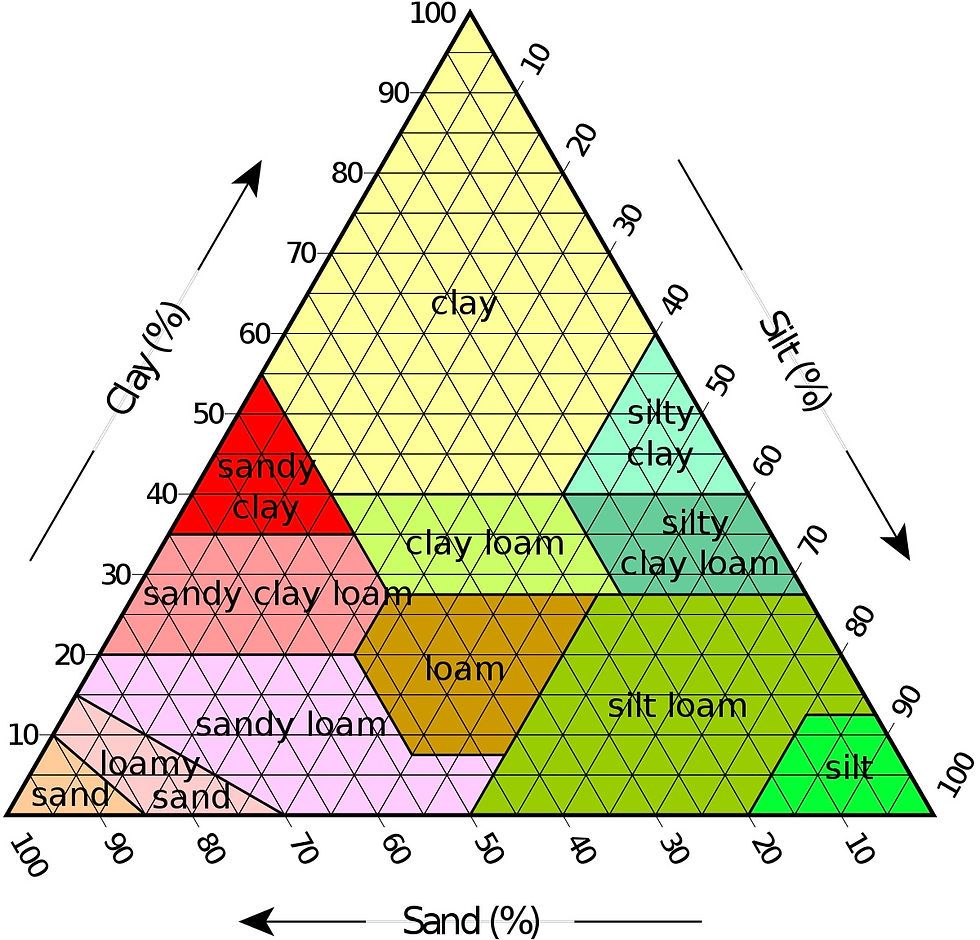
Actually don't, because we're not talking about dirt today, we are talking about SOIL!
The start-up to the growing season comes so hectically, and that would be the case even without the weather throwing us curve balls! Sometimes you know you need to amend you soil, but standing in front of all those different soil types at the store can be a real head-scratcher.
Which soil is best for your needs?
What if different plantings have different needs?
What's the difference between potting, garden, top soils?
What is LOAM?!?!
Let's start with the basics!
Soil is not homogenous...it has dynamically ever-changing properties, and this is this the case as you move across the surface, dig down vertically, or even across time. Soil is "the excited skin of the earth," as we say, and it is a system in itself, as well as a component of our ecosystem at large.
Paying attention to the characteristics of soil can be a way to navigate all the soil choices and applications, regardless of nomenclature. No matter what a given bag of soil calls itself, if you can look at the soil, feel the soil, even smell the soil - you can decide whether it's right for your needs at any given time.
Soil is made of three particle sizes, the measurement of which we refer to as soil texture: Sand*, Silt, and Clay (in order of large to small). You may have seen the USDA Soil Textural Triangle before, which is a way to determine the proportions of soil particle sizes in your soil:

As you can see above, right in the center are the loams. Loamy soils have a more balanced composition of all three particles and avoid the problems that can arise when a soil has too much of any of the three sizes.

Now let's talk about soil names at the store for a minute.
Potting soils are going to be on the larger end of the soil particle size, and often contain NO SOIL at all! What?! Yep, it's true. Potting soil is named such because it is meant for growing things in pots, containers, baskets, boots, whatever contained item used to provide growing space in an isolated way. Plantings in containers automatically put the grower in pickle: you're always striving for balance between sufficient moisture and drainage. The potting soil errors on the side of drainage, probably because the number one way plants in containers tend to die is overwatering. Potting soil is meant to help you keep good drainage (at the detriment of being very supporting to roots and stems, that's what the walls of your container are for), and keep a 50% content of air in the pot (loamy soils tend toward 50% water and 50% air mixed into the spaces between soil particles, called the "soil matrix.)." This is what the white particles are in potting soil - either vermiculite or perlite, added to keep air flow in the soil. Both are naturally occurring minerals that we alter with heat and pressure and provides no nutritional content to plants.
Potting soil tends to offer little to no nutrition for the plant (this reduces weeds, and lets you feed at your own rate - maybe with liquid fertilizer or another soil amendment), some do...if you buy a Miracle Gro bag of potting soil, it absolutely has fertilizer in it, but otherwise you want to check for any NPK** information on the bag to know what you are getting.
Top soils or garden soil are meant for in-ground use or in a raised bed that is open to the ground below, for example. They are meant to mimic what we call the A horizon of soil (see image below). They will be too heavy for use in pots, and contain more silt and clay sized particles in contrast with the sand sizes. They are meant to provide plant structure, moisture retention, and nutrients for plants. The amount of NPK, the quality of these soils varies widely - you really have to find one you like and trust. Sometimes the bags will contain a high amount of unbroken down mulch and sticks, sometimes even rocks! Sources of nutrients will differ between brands, and some use synthetic sources, other more natural. You want a nicely moist (should feel like a sponge that has been wet and wrung out), darkly colored, soft, fluffy kinda thing happening here. The dark color and the moisture retention comes from a substance called humus, not to be confused with the delicious Middle Eastern chick pea & tahini spread hummus :)
Humus is broken down organic matter (dead plant and animal bodies) that have been decomposed completed (it does not stink - but usually smells= sweet) and offer NPK back to the system, mostly the N and the K, but that's another blog post's worth of discussion!
Mature compost = humus = O horizon (see image below).

If you've made it this far, you have basically just taken a crash course in intro to soil science, and I want to congratulate you on getting here! You should be well armed to navigate any home and garden section or even to know when a soil "looks" good.
What else can we answer for you? Ask any and all your garden questions here or on our social media pages anytime!
*The term "sand" is a little different from how we use the word conversationally. Here is refers to the largest particle size. So while (what we think of as) beach sand is technically a sandy soil, not all sand size soil particles will resemble beach sand.
**NPK tells you the amount of Nitrogen, Phosphorus, and Potassium provided and is the standard measurement of fertilizers.


Comments